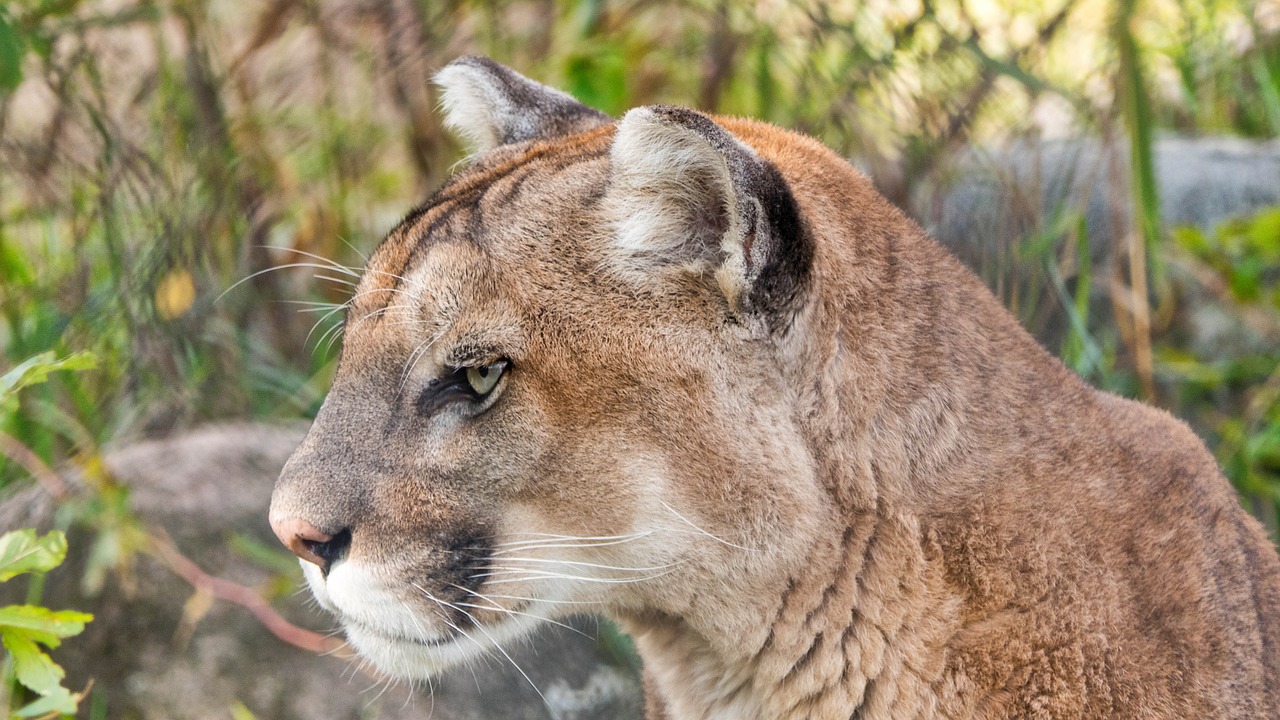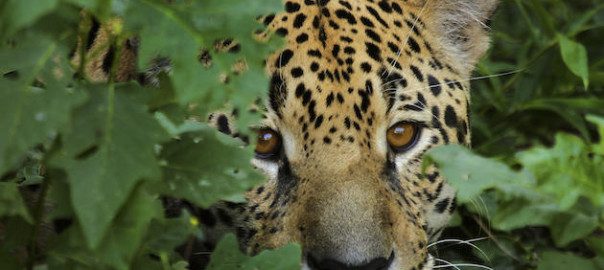Each day’s end brought fear and a sense of unease to the small ranching community of Center City, Texas in the fall of 1903. Whispered throughout, the terrible term “El Tigre.”
Warner Glenn knelt on the shallow tracks of the desert floor, carefully studying their size and depth in the gray light of dawn. The fresh tracks had sent his six dogs into a frenzy, and their howls and cries echoed throughout the Piloncillo Mountains straddling the Arizona-New Mexico border. Although the tracks clearly indicated the sign of a large cat, there was something about the prints that puzzled Glenn. Having hunted mountain lions for years, he had seen countless tracks, but something about those before him seemed unusual. Their shape was slightly different, puzzling.
With his dogs frantically giving chase, Glenn mounted his mule and put the animal into a heavy trot to keep up with the pack. For more than four hours the dogs barked incessantly as they ran the trail through yucca, cactus and desert scrub. After nearly eight miles, the dog’s howls changed in tone and meaning. Knowing they had something cornered, Glenn scrambled to a high bluff to see why his dogs had bayed.
Peering upward, Glenn was “completely shocked” to see a large jaguar, its ears flattened tight against its head and canines barked in a guttural hiss at the dogs circling below him. Quickly grabbing his camera, Glenn was able to snap off 15 photos before the jaguar vanished.
Glenn’s encounter with el tigre on March 7, 1996 offered documented proof that the secretive cat was on the verge of a possible comeback in the United States. Since this encounter, jaguars have been caught on film in a number of locations throughout the Southwest and several conservation groups have begun promoting wide, sweeping plans in hope of expanding their numbers.
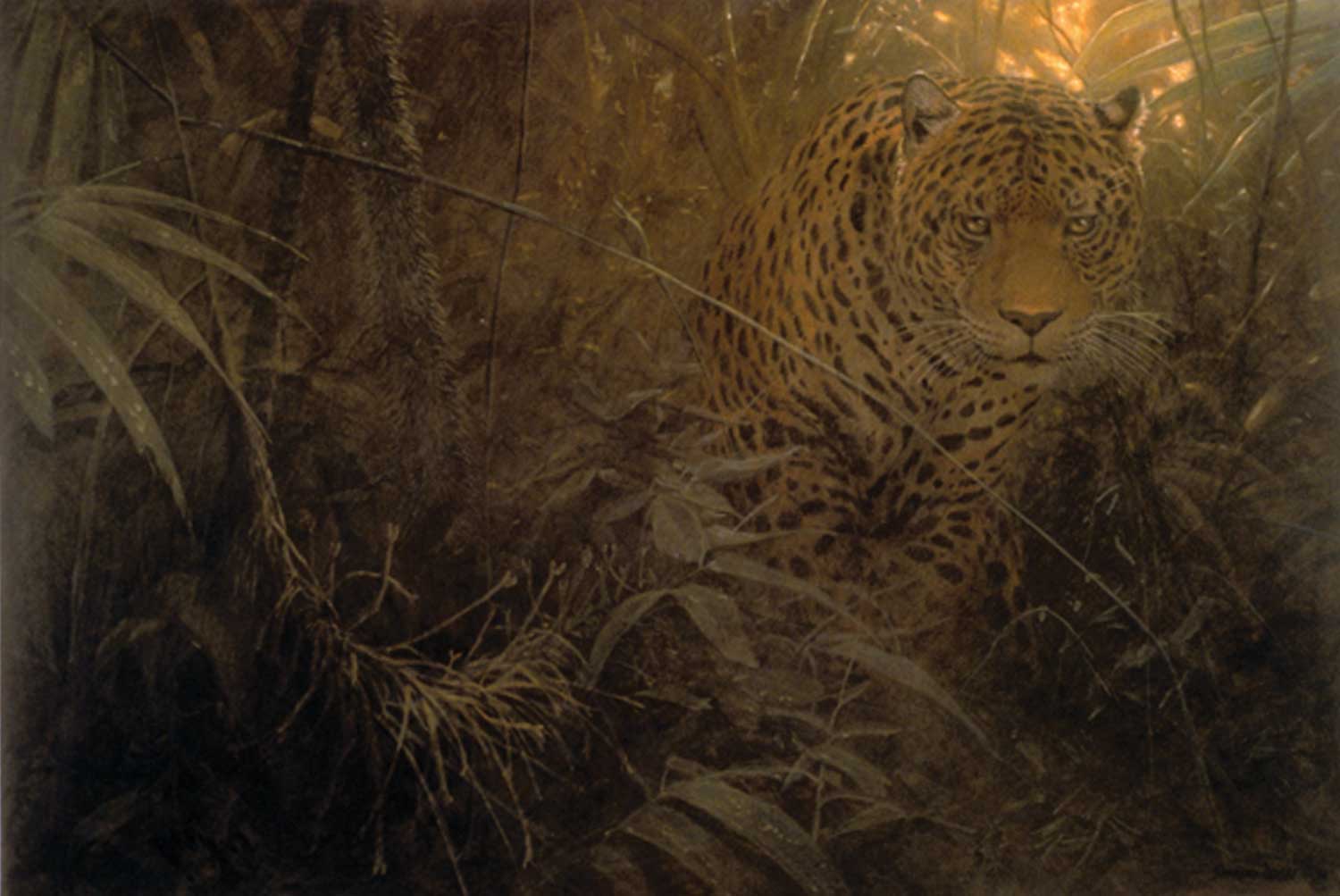
Forest Glow – acrylic on panel, 24” x 36” by John Seerey-Lester
The jaguar once roamed freely from Louisiana to California. The jaguar is the largest cat in the western hemisphere and the third largest in the world, behind tigers and lions, respectively. Males can reach 7 1/2 feet in length and weigh in excess of 250 pounds. They are extremely strong and, unlike their larger cousins that kill by grabbing their prey’s throat and suffocating them, jaguars pounce on their victims and kill them with a single piercing bite to the skull or neck. In the U.S., jaguars are thought to eat javelina, deer, birds and small animals. But the jaguar’s past history also shows that it has a preference for beef. It was the jaguar’s taste for cattle that put it in the center of some of the most exciting hunts in history.
Each day’s end brought fear and a sense of unease to the small ranching community of Center City, Texas in the fall of 1903. For weeks, haunting shrieks cut the night’s silence, awakening ranchers in the dead hours long before dawn. Watch dogs barked incessantly, either in warning or in fear at the unidentified noises, and stock began disappearing almost nightly. At first, only sheep and goats turned up missing, but over time the lost animals got larger. Even cows started to disappear. Of the few animal remains that were found, ranchers agreed that they were all slain in the same manner and that whatever was doing the killing was extremely large and very strong.
One morning, a few ranchers with their dogs in tow came upon a slain cow at the edge of some woods. The dogs began barking feverishly at something unseen within the trees. As the men rode the edge of the motte, a dark shape flew from the ground, almost straight up into the trees, disappearing into the thick foliage.
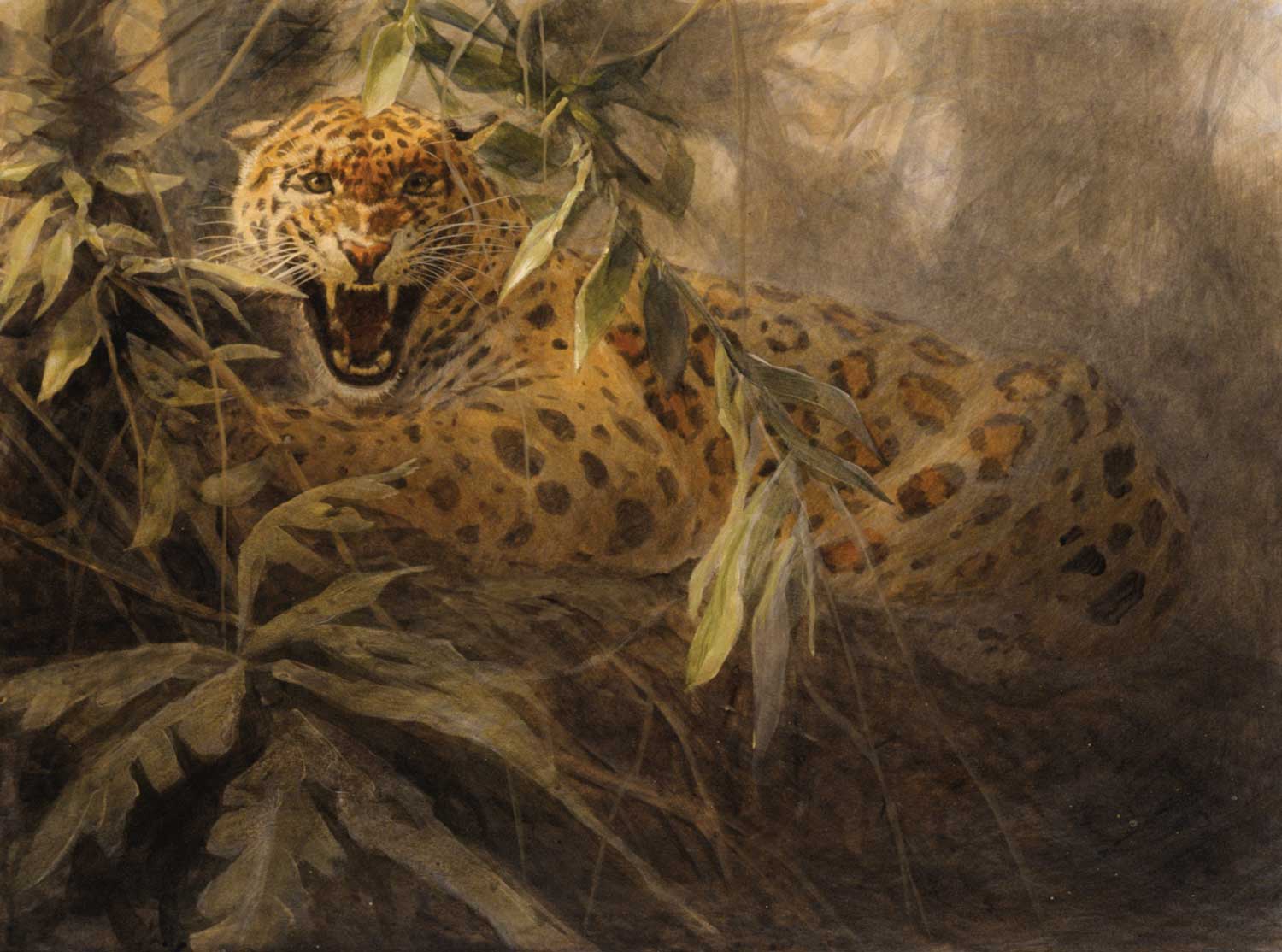
Defiance (Study) – acrylic on panel, 8” x 10” by John Seerey-Lester
By the time the story got around town, the unknown and still almost unseen animal had grown bigger and bigger. Exaggeration grew fear, and people began to wonder aloud what had all but taken control of the night. Most of the old timers were convinced that it could only be a mountain lion. But skeptics said that a lion couldn’t be that large and not nearly that strong.
As the story circulated, another slaughtered animal was discovered by ranchers. This time it was a huge longhorn. Although some argued that the animal died from natural causes, most believed that it was killed by the same phantom that had been stalking the area for weeks. Fueling that theory was the torn earth surrounding the fallen longhorn that, to some, indicated a violent struggle. Although all involved were uncertain as to what they were dealing with, most agreed that it was time for action.
The call was put out for trail hounds and any man with a horse and courage enough to ride after the stock-killer. Hunters and their dogs from all over Mills County answered the call and it wasn’t long before the dogs picked up the scent.
Close to dusk on September 3, 1903, Henry Morris, Homer Brown and John Walton were the first group to pick up the scent. Their dogs trailed furiously, leading the men to the edge of a thick stand of shin-oaks. The hunters peered into the curtain of underbrush for signs of the animal, but could only make out a set of glowing eyes peering back at them. At the dog’s charge, the concealed beast let out a blood-curdling scream, causing the pack to turn and run from the woods. The hunters frantically tried, unsuccessfully, to coax the dogs back into the thicket to corner the animal or possibly flush it out into the open.
As the dogs reentered the brush, an immense paw suddenly latched onto Jack, Homer Brown’s beagle redbone cross hound, and pulled it from the rest of the pack. In a violent blur the animal grabbed Jack in his jaws, crushed his skull and flung his dead body aside. Unfazed by the attack, the dogs continued all efforts to subdue the animal.
Morris, deciding that they would need heavier ammunition and the help of others, rode off, leaving Brown, Walton and the dogs to keep the animal at bay. It didn’t take long for the others to arrive and see the commotion firsthand.
Dogs that got close to the edge of the thicket were swiped at. Those that ventured too close were cut to ribbons and thrown aside by the still totally unseen animal. The night air was filled with the screams of dogs and the rapid volley of gunshots in haste or in fear.
Suddenly, and without warning, the cornered animal bolted. The hunters saw a blur of motion, with the remaining dogs giving chase. The pack ran the animal up a small Spanish oak in the middle of another thicket. Brown rode within shooting range and fired his shotgun at the huge animal, hitting it in the hip. The beast fell to the ground and the remaining pack swarmed on top of it. The dogs’ barks immediately changed to screams and yelps as the pile of writhing animals exploded. Dogs were slashed open and thrown, some a distance of 20 feet or more, to their death. Then, just as suddenly as it had before, the ferocious beast broke free from the few remaining dogs and ran into thicker cover.
Old Red, one of Claude Eacott’s dogs, badly ripped open across his shoulders and one of the few left alive, hobbled after the beast. The hunters chased after the animal until it was cornered once more. The only thing separating the men from the killer was one or two dogs and a few small bushes.
One of the hunters decided that he would charge the animal and finish him off. He plunged forward and just as his horse jumped the small hush, the beast on the other side sprung forward to meet them. The animal caught the horse in the hindquarters, immediately sinking its teeth and claws into the meat of the leg. The horse collapsed with the rider atop him screaming, “Don’t shoot . . . you might hit me or the horse!”
Eacott, fearing for the trapped hunter’s life, dug his spurs into his own horse, charging into the violent exchange. The animal turned loose of the first horse and lunged at Eacott, coming within inches of his head. As the beast hit the ground, Eacott turned and fired another shotgun blast into the animal that somehow managed to run free from the commotion before collapsing.
The hunters collected the beast and took him to town for all to see. It wasn’t until they were back in Center City that the animal was identified as a jaguar. The huge male weighed 152 pounds and had a foreleg that was 21 inches around. The cat had slain countless stock animals and on the night of the hunt, killed eight dogs and wounded numerous others. Before being mounted and displayed in a museum in Austin, the jaguar was scored by the Boone and Crockett Club who, to this day, still lists it as one of the largest taken in North America.
More than four decades later, and several hundred miles south, another jaguar terrorized the night. This one would earn the distinction of being the last jaguar to be killed in Texas.
In 1946, cowboys on the San Jose Ranch near Barreda started finding numerous, partially eaten remains of calves. For several weeks the ranch hands were uncertain as to what was killing and eating the calves, until one day they finally found the clue they had been looking for. In the thick, dense chaparral, one of the men discovered a set of tracks larger than any seen on the ranch before. At first, he and the other men thought they were made by a large cougar. But soon, all involved realized they were the tracks of a jaguar.
After the ranch owner was informed, the call went out for dogs to track the big cat and to put an end to the loss of livestock. Within days, three packs of dogs were brought in along with extra men to assist in the hunt. The dogs were put on the trail and in no time the pack had picked up the scent and given chase. Men armed with rifles and shotguns were positioned throughout the ranch with the hope that the dogs would flush the cat toward one of them.
Time passed slowly as the men sat motionless in the South Texas heat, listening to the dogs baying in the distance, wondering all the while what the next moment would bring. Each sound accentuated their fear and uncertainty, as well as thoughts of how large and dangerous an animal they were dealing with.
Growing weary from sitting motionless at his position, Reynaldo Ramirez stood to stretch his aching legs and back. Although he could hear the dogs, he believed them to be far away and thus gave little thought to revealing his ambush sight. As he turned and stretched, he watched the nearby chaparral slowly morph into a dappled pattern of black rosettes on a canvas of burnt yellow vegetation.
Ramirez frantically thrust the shotgun to his shoulder and fired a round of buckshot, completely missing his target. As the blast from his gun echoed across the brush country, Ramirez could again hear the dogs. This time there was no mistaking how close they were. Confused at the wayward shot, and with a pack of dogs slowly bringing up its rear, the jaguar charged forward at Ramirez. The lead dog burst from the side of the tangled underbrush halfway between Ramirez and the charging cat. With lighting speed, the cat slapped the dog aside, breaking its neck and killing it instantly. More dogs leapt from the scrub as the jaguar continued forward.
Shaking with fear, Ramirez fired once more. Only one of the lead balls hit its mark, striking the cat just below its chin. Seemingly unfazed, the immense predator continued forward. With the distance between him and the cat quickly shrinking, Ramirez continued firing, hitting the huge animal dead center each time. With one last lunge, the cat fell dead at Ramirez’s shaking feet.
The ranch hand stepped away, his hands trembling as he rapidly reloaded his pump shotgun. Only when other men arrived was the jaguar inspected and measured. All told, the cat was over 7 1/2 feet in length and weighed slightly more than 200 pounds. Its retractable claws measured more than an inch in length, and its front canines were slightly more than two inches long.
Unfortunately, this jaguar hunt was not only the last in the state of Texas, but one of the last in the United States as well. Although jaguars will more than likely never be hunted again, some hope that they’ll come to populate the wilderness along the Texas-Mexico border once more.
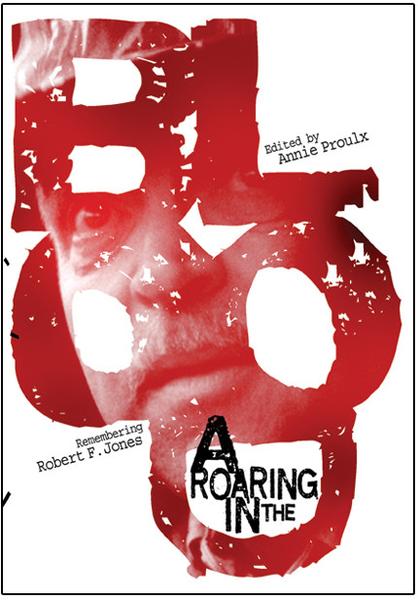 Hard-hitting staff writer for Time and Sports Illustrated; critically acclaimed author of such novels as the cult classic Blood Sport and the Western epic Tie My Bones To Her Back; essayist, adventurer and sportsman of truly Hemingwayesque proportions . . . Robert F. Jones was all these things and many more.
Hard-hitting staff writer for Time and Sports Illustrated; critically acclaimed author of such novels as the cult classic Blood Sport and the Western epic Tie My Bones To Her Back; essayist, adventurer and sportsman of truly Hemingwayesque proportions . . . Robert F. Jones was all these things and many more.
Three years in the making, A Roaring in the Blood: Remembering Robert F. Jones paints a frank, funny, richly textured portrait of this lion of American letters, as seen through the eyes of his friends and as revealed through his own hard-muscled prose. Buy Now


